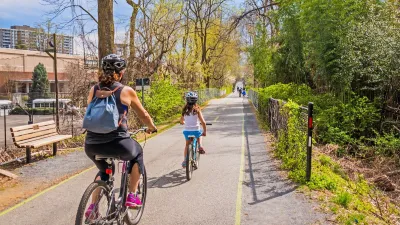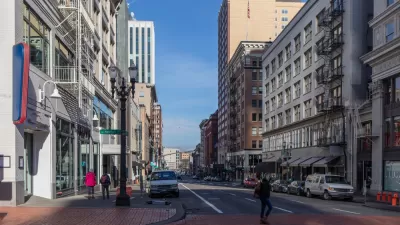1.2 million people are killed by road collisions every year, says a new report from the World Health Organization. Across the world, it's the leading cause of death for 15- to 29-year-olds. Nick Mead discusses the report's chilling findings.
"More than 1.2 million people are killed on the road every year – and more than 20 million are injured, according to a World Health Organisation report published on Thursday."
"The WHO's Global Status Report on Road Safety 2013 found that 27% of global traffic deaths are among pedestrians and cyclists – vulnerable road users who have been neglected in transport and planning policies," notes Mead. "In low- and middle-income countries the figure is closer to 33%; in some, it is as high as 75%."
"Margaret Chan, director general of the WHO, said the number of road deaths was 'unacceptably high', while injuries 'take an enormous toll on individuals and communities as well as on national economies'. Low-income families are hardest hit by medical costs and lost wages," adds Mead.
So, as car use continues to rise (particularly in the developing world), what can be done to head off this growing public health crisis?
"The report says the first step to reducing traffic mortality is a group of laws aimed at drinking and driving, speeding, and failing to use motorcycle helmets, seat-belts, and child restraints," writes "Currently, only 28 percent of countries — covering 7 percent of the world’s population — have laws addressing all of these factors."
FULL STORY: Life and death on the world's most dangerous roads – interactive

Alabama: Trump Terminates Settlements for Black Communities Harmed By Raw Sewage
Trump deemed the landmark civil rights agreement “illegal DEI and environmental justice policy.”

Study: Maui’s Plan to Convert Vacation Rentals to Long-Term Housing Could Cause Nearly $1 Billion Economic Loss
The plan would reduce visitor accommodation by 25% resulting in 1,900 jobs lost.

Planetizen Federal Action Tracker
A weekly monitor of how Trump’s orders and actions are impacting planners and planning in America.

Waymo Gets Permission to Map SF’s Market Street
If allowed to operate on the traffic-restricted street, Waymo’s autonomous taxis would have a leg up over ride-hailing competitors — and counter the city’s efforts to grow bike and pedestrian on the thoroughfare.

Parklet Symposium Highlights the Success of Shared Spaces
Parklets got a boost during the Covid-19 pandemic, when the concept was translated to outdoor dining programs that offered restaurants a lifeline during the shutdown.

Federal Homelessness Agency Places Entire Staff on Leave
The U.S. Interagency Council on Homelessness is the only federal agency dedicated to preventing and ending homelessness.
Urban Design for Planners 1: Software Tools
This six-course series explores essential urban design concepts using open source software and equips planners with the tools they need to participate fully in the urban design process.
Planning for Universal Design
Learn the tools for implementing Universal Design in planning regulations.
Caltrans
Smith Gee Studio
Institute for Housing and Urban Development Studies (IHS)
City of Grandview
Harvard GSD Executive Education
Toledo-Lucas County Plan Commissions
Salt Lake City
NYU Wagner Graduate School of Public Service





























